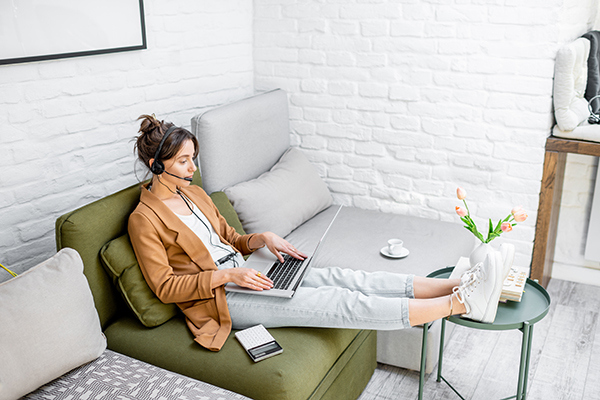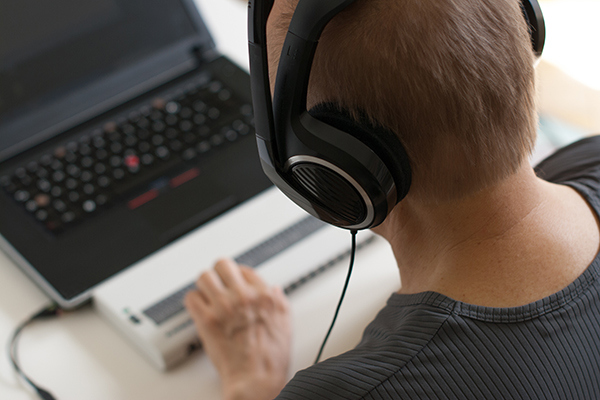By Sarah Morgan
The pandemic caused many of us to adjust our working environments. Are you still working from your kitchen table or are you back in the office? Are you walking around with a laptop or sitting at a fancy stand up desk with two extra monitors?
Like most companies worldwide, LKF Marketing pivoted to lessen the barriers to accessible and comfortable work for our team as they work in-person, remotely, or a combination of both. This has ranged from increasing our VPN speed for quicker access to files on our server to purchasing furniture for new office configurations and sending technology home for some of our team members.
Whatever the measure is, our goal has been to decrease digital barriers so that our staff can have an optimal user experience and continue to deliver intelligent marketing solutions to our clients regardless of where and how they are working.
With all the extra attention on working environments, has it ever occurred to you that your website is a working environment for those who visit it? Have you thought about how easily and quickly users can pull up your site, scan the content for their needs, and move through the buttons to complete their desired actions?
Much like adjusting a physical workspace to accommodate pandemic guidelines, a truly usable and accessible website utilizes technology and physical design to create a smooth, barrier-free experience for all users.
While the pandemic has highlighted the need for flexibility and inclusive measures to digital access, LKF’s web and design teams have worked to eliminate digital barriers from sites for many years. We first were exposed to digital barriers from a usability and accessibility perspective when working on a government-related site more than 15 years ago.
We learned firsthand how a person with a visual impairment uses a website via audio cues and navigating with keyboard actions. We also realized how a bad user experience can turn off visitors before they even give the site a chance.
What are accessibility and usability when it comes to websites?
Approximately one in five Americans live with some sort of disability, ranging from vision or hearing impairments to mobility or other issues. Accessibility is the practice of making sure your website has the capability and functionality to support all users.
This is accomplished through a variety of tactics from how you word links to how the code on the backend of the site works. Many persons with disabilities use assistive devices to help them interact with websites, such as screen readers for visually impaired users. How a site is worded and built can drastically impact their experience.
Usability is more about the overall experience someone has with your brand or website. Did the site load quickly? Was the brand clearly defined right on the landing page? Did the links work when I clicked on them? Was the terminology easy to read and understand? Was the search interface clear and easy to use? Making a bad impression or forcing the user to work harder than necessary often means a higher bounce rate and less website engagements.
Why should I care about accessibility and usability?
From an accessibility standpoint, we’ve always said that anything you do to improve accessibility also improves search engine optimization. If you think about it, the way Google or other search engines crawl your site is similar to how a visually impaired person’s assistive device reads your site. Improvements to accessibility help your site rank higher.
From a usability perspective, it just makes sense to think about and improve upon how a user interacts with your site. Research shows that people make a judgement about a site in less than one second. That doesn’t leave you much time to make a good impression.
Here are a few examples of what we learned about digital barriers and how people interact with sites:
Once, during a test of a website, a user was asked to “go home”. She started to pack her belongings up because she took the instruction literally. This was a reminder to us to make sure that our websites aren’t using technical jargon or insider knowledge to instruct people on what to do.
We often have clients scan a document on their copier, then link to it on their site. To a person with an assistive device, this is essentially a blank piece of paper. Are you making PDFs properly to ensure they can be read by assistive devices and indexed by search engines?
Colors are pretty and make the world more fun to look at – unless you are color blind! Are you making sure that your site’s elements are still visually discernible for someone with a color blindness issue?
Accessibility and user experience are critical parts of a good website. Efforts to remove digital barriers in both areas extend to your brand and promote good will to all customers and audiences.
Just like the precautions taken when the pandemic hit, these changes can be a lot to handle all at once. Trust LKF to partner with you and guide you through what’s working and not working on your website. After all, we all want to be comfy in our working environment, whether it’s a couch, an office chair, or a website!
Contact us to learn more about usable and accessible website measures.


